How to Know When Pork Ribs are Done
On June 17, 2022 (Updated July 02, 2024)
This post may contain affiliate links. Please read our disclosure policy.
If you’ve ever cooked pork ribs on the grill or smoker, you likely often find yourself wondering when your pork ribs are done. In fact, this is one of the biggest questions we get at Hey Grill Hey, in addition to what is the best internal temp for pork ribs. Let’s break down exactly how to determine when your ribs are done.
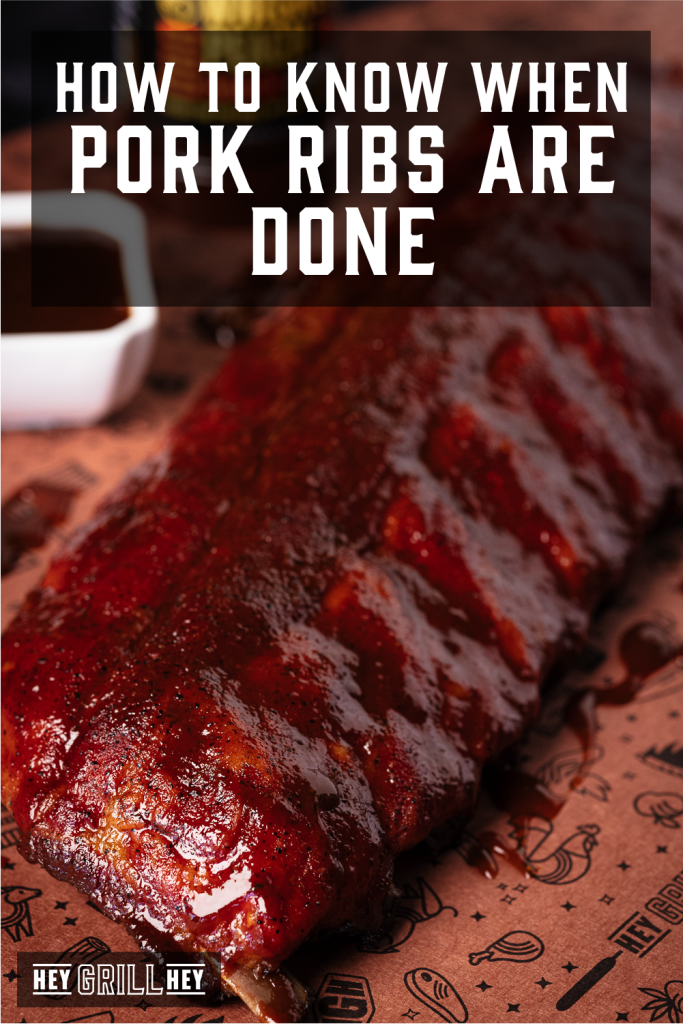
Best Internal Temp for Pork Ribs
The best internal temperature for pork ribs is approximately 200 degrees F.
I recommend cooking all cuts of pork ribs to an internal temperature between 198 and 202 degrees F. Unfortunately, taking an accurate internal temperature in pork ribs is a difficult proposition due to thin layers of meat and interspersed bones. Most temperature readings taken directly in rib meat can vary pretty widely from one end of your rack to the other, and change based on your proximity to a rib bone.
Despite these issues, an accurate instant-read thermometer and a few other tips and tricks to check for doneness will yield tender and juicy pork ribs every time.
Types of Pork Ribs
The most common pork ribs for grilling, smoking, and braising fall into 4 main cuts:
- Spare Ribs. Spare ribs are flat and wide, loaded with great intramuscular fat due to their proximity to the belly. They also have a good amount of connective tissue that holds the ribs together and supports the internal organ systems of the hog. This combination of fat and tissue makes spare ribs a great option for low and slow cooking to add tenderness and flavor.
- St. Louis Spare Ribs. St. Louis spare ribs are cut down from a rack of full spare ribs. Typically, the end 2-3 bones are trimmed off and the top 2-3 inch section of thin bones and cartilage are also removed. This trimming leaves St. Louis spare ribs with a more uniform appearance than spares with all of the great fatty flavors you’d expect from the full rack
- Baby Back Ribs. Baby back ribs are possibly the most popular rib type for grilling. With slightly less fat than spare ribs and usually a bit more meat above the bone, these ribs make for great eating and work well in both low and slow smoking or hot and fast grilling applications.
- Country-Style Ribs. Country-style pork ribs aren’t ribs at all (despite the label from the butcher counter.) These “ribs” are actually 1.5-2 inch thick strips typically cut from the pork shoulder. Sometimes they include bone segments and sometimes they don’t, but they do have similar fat content and tough connective tissue to ribs. These are my favorite to smoke and braise and then serve shredded and loaded with sauciness.
Checking for Doneness
As I mentioned at the top of the post, the temperature is only one of the many factors you can utilize to check for the doneness on your ribs. There is no “magic number” when it comes to temperature and rib perfection, but your thermometer can certainly be used in combination with the following tools to check ribs for doneness.
Meat Thermometer
A quality instant-read thermometer will give you a great deal of information on what’s happening inside those ribs during the cooking process. The tight connective tissue in ribs begins to break down around 195 degrees F. Anything under that temperature and your ribs will be chewy, stringy, and tough.
At 195 degrees F, that tissue starts to gelatinize and turn into tasty, melty deliciousness. Most ribs hit their sweet spot for doneness around 198 degrees F, but some take until 203 degrees F to be perfectly tender. This spread in final temperatures is one reason why thermometers are a great jumping-off point for rib perfection, but not the end all be all indicator.
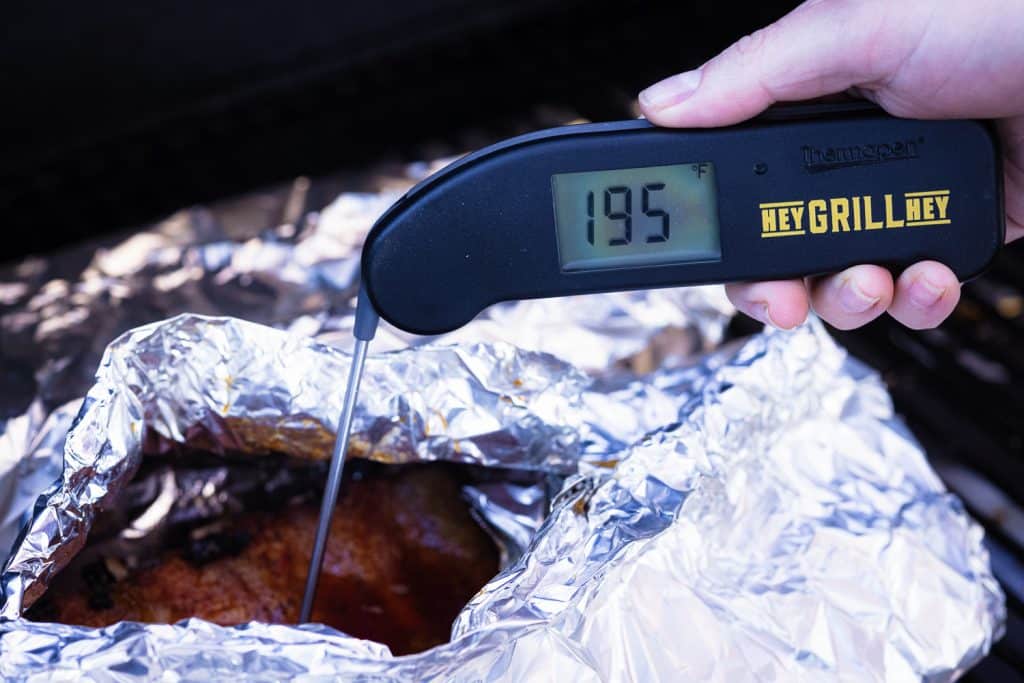
Tips for Making the Best Ribs by Taking Rib Temps
Here are a few tips to help you get the most accurate temperature for ribs.
- Insert the probe into the thickest part of the meat, between any bones. If your probe is in a fat pocket or touching bones on your rack of ribs, you won’t get an accurate read.
- Use an instant read thermometer to take temperatures quickly and avoid heat loss inside your grill or smoker. Losing too much heat due to slow temperature readings can drag out the time it takes for your ribs to finish cooking.
- Take the temperature in a couple of locations across the ribs. Having multiple readouts will give you a better overall look at where your ribs are at and allow you to make adjustments for hot spots and move the ribs around to account for thicker ribs taking longer to cook.
The Bend Test
Once your ribs are nearing your ideal finished internal temperature, you’ll start looking for other doneness indicators to give you the perfect finished rack of ribs.
One tool I use regularly is the “bend test”. The bend test requires you to use tongs to lift one end of your rib rack. Lift the end off of the grates, straight up. The other end of the rack will remain on the grill and you should be able to see a nice bend in the ribs and a slight shredding to the rib meat on top of the rack.
If the whole rack lifts up together, those tough connective tissues are still very tight and your ribs need more time to finish cooking. If your ribs break apart, you may have taken them too far (fall off the bone tender ribs, anybody?).
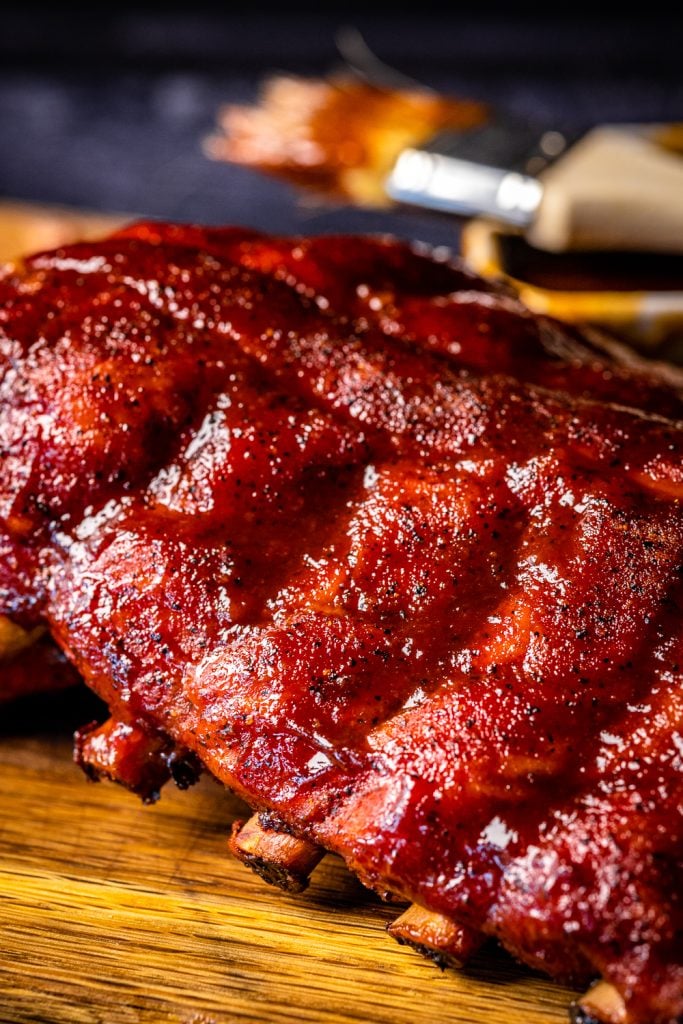
Bone Pull-Back
Looking for bone pull-back is a very visual indicator for rib doneness, and admittedly the least accurate. Most often, when ribs are finished cooking and ready to come off of the grill, you’ll notice that the meat has pulled back between the bones and about ½ inch of the bones will be exposed.
One reason this method isn’t as accurate is that it can definitely be exaggerated or understated based on what type of ribs you are cooking and how they were prepared. Spare ribs tend to pull back more than baby back ribs.
Additionally, the pull-back on ribs can be enhanced by pressing the meat up in between the bones on the sides of the ribs during the cooking process to improve the visual appeal of the finished ribs (this happens regularly in competition BBQ).
Best Internal Temp for Different Pork Ribs
Best Internal Temp for Spare Ribs and St Louis Style Ribs
200-202 degrees F is the best internal temp for spare ribs, and their trimmed-down counterpart, St. Louis spare ribs. This higher temperature is due to the fat content and muscle structure of these cuts.
Best Internal Temp for Baby Back Ribs
198-200 degrees F is the best internal temp for baby back ribs.
These ribs tend to be leaner and can dry out if cooked too high. When taking the temperature on baby backs, you want that thermometer probe to glide into the meat like it is sliding into softened butter. The ribs may not fall off the bone at this temperature, so keep that in mind.
Your ideal temperature may be up above 200 degrees F to get them to completely fall off the bone, in which case you’ll want a bit of BBQ sauce to compensate for some of the moisture lost.
Best Internal Temp for Country Style Ribs
202-205 degrees F is the best internal temp for country-style ribs.
As these “ribs” are cut from the pork shoulder, they have quite a bit of fat and tend to hit their ideal texture at a higher temperature than true ribs. I also like serving these shredded with a bit of barbecue sauce on the side, as they are definitely “fall off the bone” tender.
Cooking Process and Pork Rib Prep Tips
Buying Ribs
If you aren’t sure what type of rib is your favorite to cook and eat, I recommend buying single racks in each cut from the grocery store and cooking them side by side. This will give you a first-hand taste testing opportunity to try each cut and see what your family prefers.
All ribs are delicious, but some people prefer the fattiness of a spare rib while others prefer the meatiness of a baby back. The only way to know what you like is to give them a try!
Defrosting Ribs
If you buy your ribs frozen, you’ll want to defrost them completely before attempting to cook. Cooking meats from frozen can dramatically alter the cooking time you’d see in any of my recipes.
I’ve also cooked frozen ribs that turned out a bit drier than I liked because of the higher heat I had to use to get them to the finished temperature I wanted.
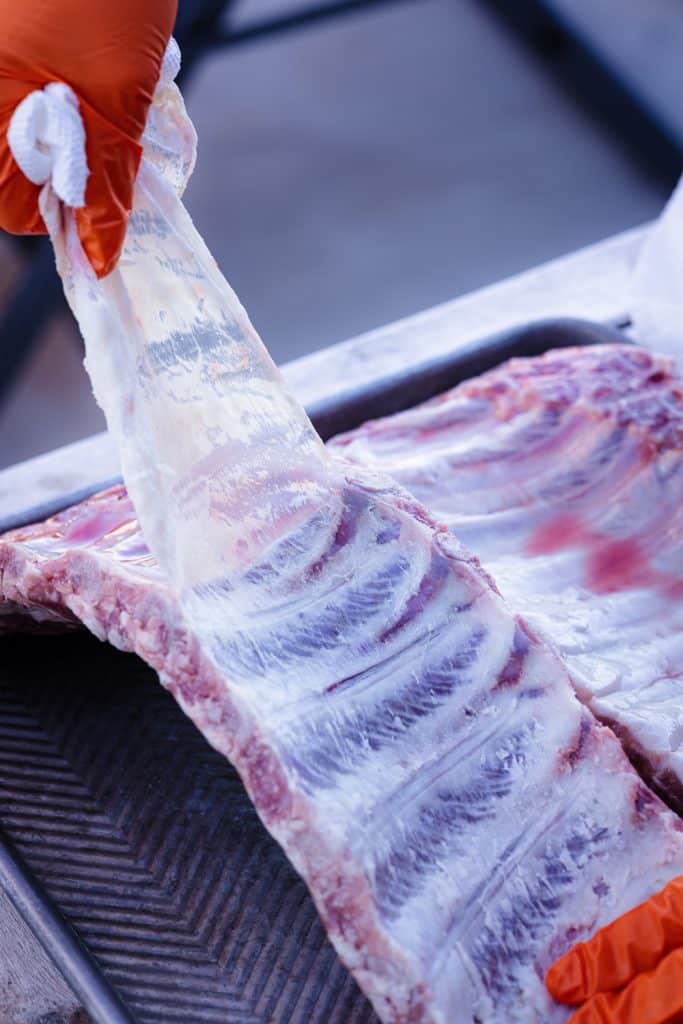
Membrane Removal with Paper Towels
One step that can impact the final texture of your ribs, even more than temperature, can be your decision to leave or remove the papery membrane on the bone side of the ribs. This membrane is thin and white. As you cook your ribs, the membrane dries out and can turn leathery.
To combat that undesirable bite of papery/dry membrane, most people choose to remove it completely. Simply lift one end of the membrane using a butter knife, wiggle it loose, grip it firmly with a paper towel, and peel it away from the rib bones.
Others prefer to leave the membrane, but to avoid the excessive bite of the tough membrane, they use a sharp knife to score the membrane all across the bone side of the ribs. This makes for an easier bite-through experience.
How Long to Cook Ribs?
The most useless indicator of rib doneness is the amount of time they spend on the grill. You can cook ribs with black pepper, salt, and garlic powder rub to a crunchy and bite-through finish on a charcoal grill in a couple of hours. Or, you can spend 6-7 hours low and slow smoking, braising in brown sugar and apple juice, and saucing your ribs to fall-off-the-bone tenderness.
The amount of time your ribs take depends entirely on the type of ribs you buy and your overall cooking temperature on the grill. The most important and best results you can get is to avoid a magic number for time and shoot for a texture of ribs you enjoy eating with all the smoky flavor you love!
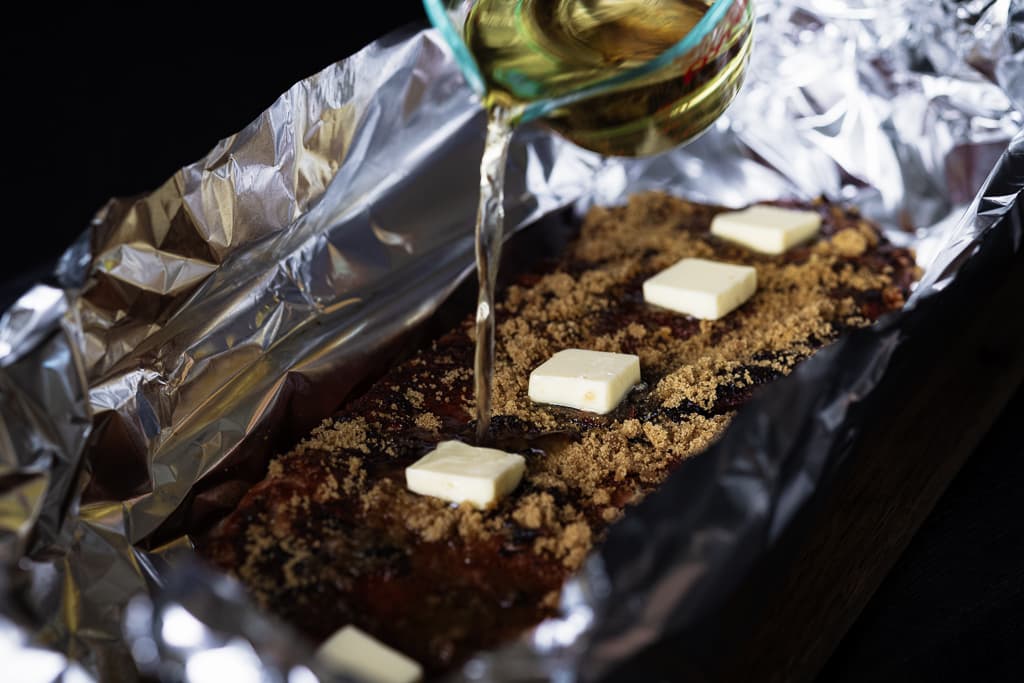
Smoking vs Braising with Aluminum Foil vs Boiling
There are a million different methods of cooking pork ribs at home. From low and slow smoked ribs to ribs cooked on a gas grill with wood chips, to charcoal grilled ribs, I’ve written over 20 different rib recipes and cooked thousands of racks during the last decade as a professional BBQ recipe developer.
I’ll include some tested and true recipes for you to try at home so you can work on those rib doneness testing skills. One thing I’ll never do is tell you to boil ribs… it’s just not my style.
Smoked Pork Rib Recipes
Scroll through a few of the most popular and favorite rib recipes on my site. They vary from fall-off-the-bone to bite-through tender ribs, with all of the fun flavors you can imagine!
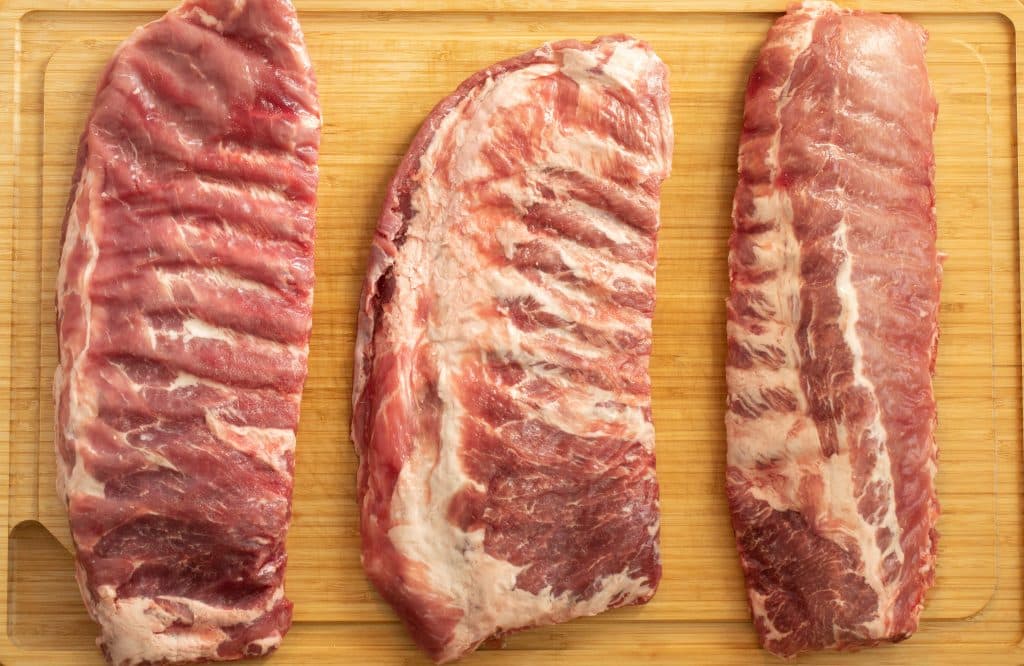
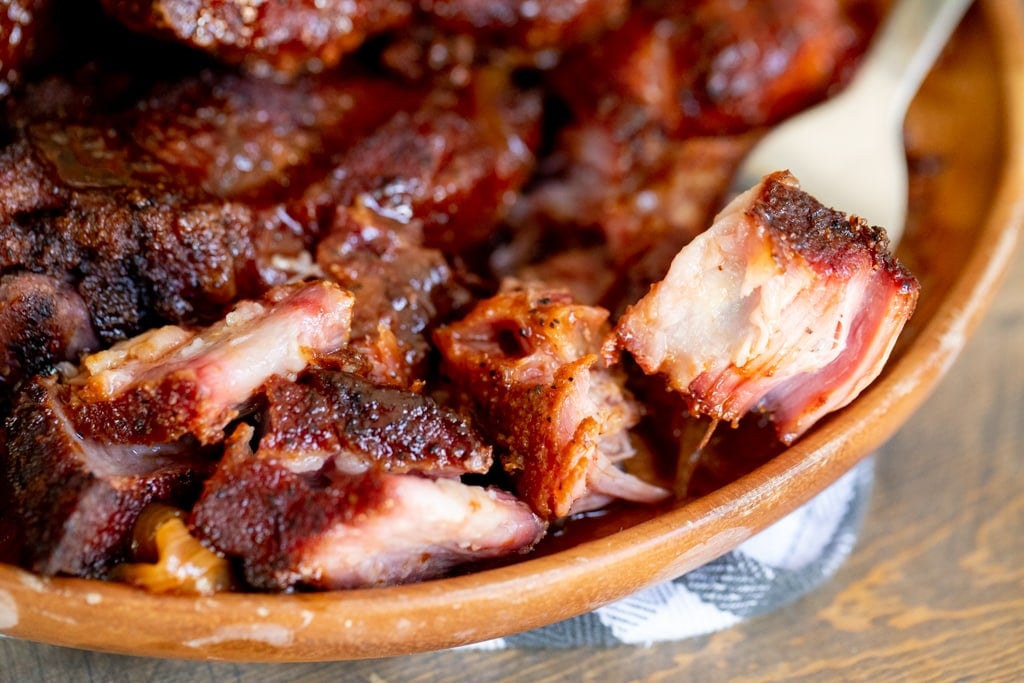
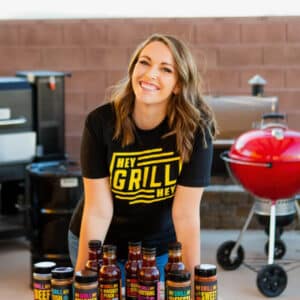
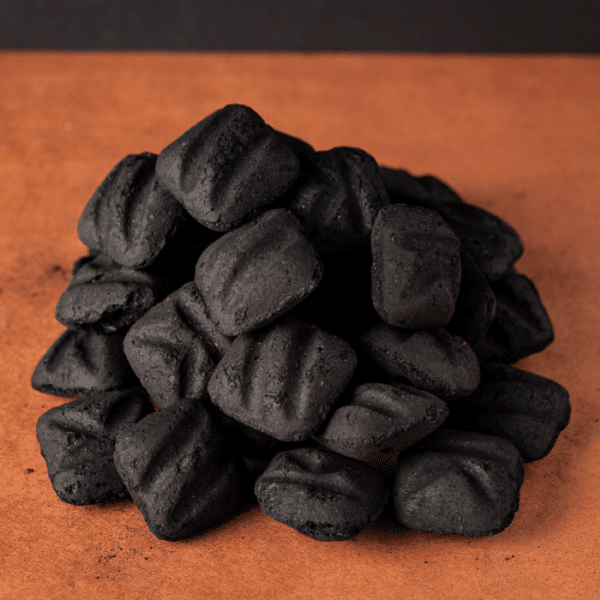
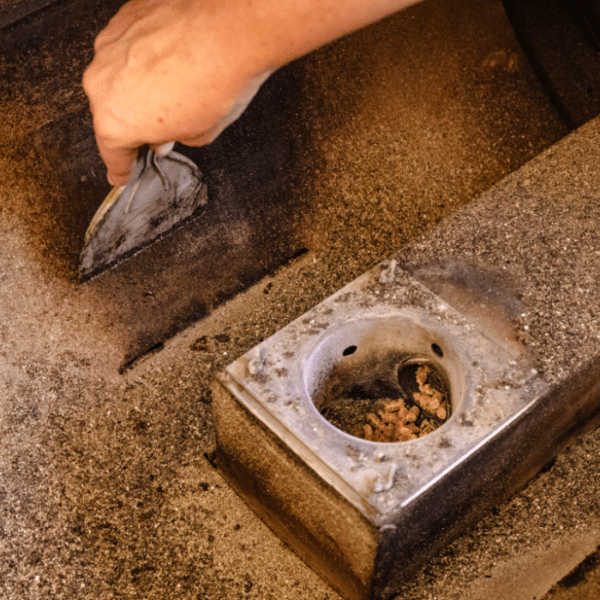
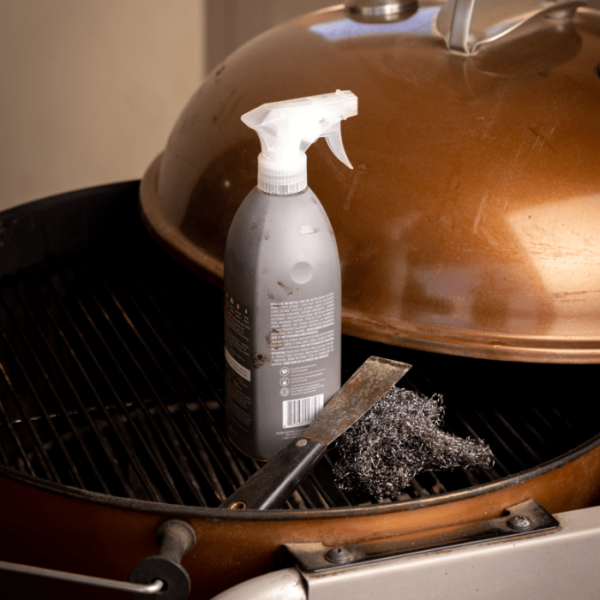
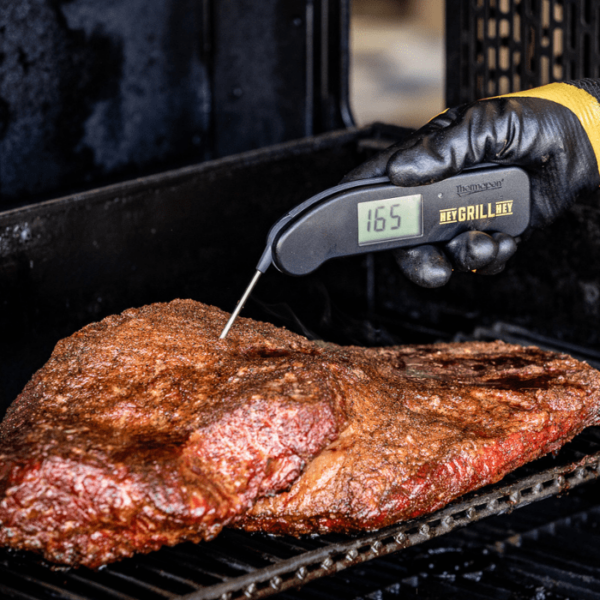





Great stuff. 3-2-1 man myself…..wonder if after 3-2 part, can I foil wrap for a travel day and do the -1 when I get there?
Ned
I’d finish cooking them to temp and reheat when you get there.
Hi, I’ve used a lot of your recipes for several years.
Now, I have a camping trip coming up with some friends. My wife wants to smoke some ribs, then freeze them and finish them off on a flat top at the camp. Kinda be like par-boiling ribs or chicken.
I’m just not sure that can be done safely. Bringing the smoker along is not an option.
Thoughts?
I would just finish them completely before freezing, then use the flat top to reheat them and crisp the outsides.
so yummy in my tummy
Like always. The details are time tested by a real pro. Super easy to understand.
This is the best and most helpful information on cooking ribs I’ve seen online for any level cook.
O.K.
Thanks for this post. Very detailed! One thing I experienced is cooking multiple racks using a metal rack…you definitely need to factor in more time as the air between the racks was cooler initially; I learned the hard way by pulling them to early as the ones on the outside passed the flex test, but the inner rack wasn’t quite there and was a bit tough.